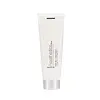What's inside
What's inside
 Key Ingredients
Key Ingredients

 Benefits
Benefits

 Concerns
Concerns

 Ingredients Side-by-side
Ingredients Side-by-side

Water
Skin ConditioningCaprylic/Capric Triglyceride
MaskingC12-15 Alkyl Benzoate
AntimicrobialCetearyl Ethylhexanoate
EmollientGlycerin
HumectantCocos Nucifera Oil
MaskingShorea Stenoptera Seed Butter
EmollientCetearyl Alcohol
EmollientCetearyl Glucoside
EmulsifyingCyclopentasiloxane
EmollientCetyl Alcohol
EmollientGlyceryl Stearate
EmollientPhenoxyethanol
PreservativePanthenol
Skin ConditioningSea Water
HumectantEthylhexyl Methoxycinnamate
UV AbsorberTocopheryl Acetate
AntioxidantDimethiconol
EmollientParfum
MaskingPotassium Cetyl Phosphate
EmulsifyingChlorphenesin
AntimicrobialHydroxypropyl Guar
Emulsion StabilisingAcrylates/C10-30 Alkyl Acrylate Crosspolymer
Emulsion StabilisingDisodium EDTA
O-Cymen-5-Ol
AntimicrobialHydrolyzed Algin
Sodium Dehydroacetate
PreservativeSodium Hyaluronate
HumectantSodium Hydroxide
BufferingBenzyl Salicylate
PerfumingSodium Carboxymethyl Betaglucan
Sucrose
HumectantLimonene
PerfumingBHA
AntioxidantBHT
AntioxidantCitric Acid
BufferingPropyl Gallate
AntioxidantWater, Caprylic/Capric Triglyceride, C12-15 Alkyl Benzoate, Cetearyl Ethylhexanoate, Glycerin, Cocos Nucifera Oil, Shorea Stenoptera Seed Butter, Cetearyl Alcohol, Cetearyl Glucoside, Cyclopentasiloxane, Cetyl Alcohol, Glyceryl Stearate, Phenoxyethanol, Panthenol, Sea Water, Ethylhexyl Methoxycinnamate, Tocopheryl Acetate, Dimethiconol, Parfum, Potassium Cetyl Phosphate, Chlorphenesin, Hydroxypropyl Guar, Acrylates/C10-30 Alkyl Acrylate Crosspolymer, Disodium EDTA, O-Cymen-5-Ol, Hydrolyzed Algin, Sodium Dehydroacetate, Sodium Hyaluronate, Sodium Hydroxide, Benzyl Salicylate, Sodium Carboxymethyl Betaglucan, Sucrose, Limonene, BHA, BHT, Citric Acid, Propyl Gallate
Petrolatum
EmollientCera Microcristallina
Emulsion StabilisingCyclopentasiloxane
EmollientRosa Canina Fruit Oil
EmollientBehenyl Alcohol
EmollientOryza Sativa Bran Oil
EmollientIsopropyl Myristate
EmollientAloe Barbadensis Leaf Juice
Skin ConditioningDimethicone Crosspolymer
Emulsion StabilisingSqualane
EmollientTribehenin
EmollientArnica Montana Flower Extract
MaskingPropylene Glycol
HumectantTocopheryl Acetate
AntioxidantSimmondsia Chinensis Seed Oil
EmollientPhenoxyethanol
PreservativePanthenol
Skin ConditioningBisabolol
MaskingCaprylyl Glycol
EmollientSodium Lauroyl Lactylate
EmulsifyingAvena Sativa Kernel Oil
Skin ConditioningBacillus Ferment
Skin ConditioningCeramide NP
Skin ConditioningCholesterol
EmollientPhytosphingosine
Skin ConditioningCeramide AP
Skin ConditioningTocopherol
AntioxidantCeramide EOP
Skin ConditioningEthylhexylglycerin
Skin ConditioningXanthan Gum
EmulsifyingCarbomer
Emulsion StabilisingPetrolatum, Cera Microcristallina, Cyclopentasiloxane, Rosa Canina Fruit Oil, Behenyl Alcohol, Oryza Sativa Bran Oil, Isopropyl Myristate, Aloe Barbadensis Leaf Juice, Dimethicone Crosspolymer, Squalane, Tribehenin, Arnica Montana Flower Extract, Propylene Glycol, Tocopheryl Acetate, Simmondsia Chinensis Seed Oil, Phenoxyethanol, Panthenol, Bisabolol, Caprylyl Glycol, Sodium Lauroyl Lactylate, Avena Sativa Kernel Oil, Bacillus Ferment, Ceramide NP, Cholesterol, Phytosphingosine, Ceramide AP, Tocopherol, Ceramide EOP, Ethylhexylglycerin, Xanthan Gum, Carbomer
Ingredients Explained
These ingredients are found in both products.
Ingredients higher up in an ingredient list are typically present in a larger amount.
Cyclopentasiloxane, or D5, is a silicone used to improve texture of products and trap moisture.
D5 is considered lightweight and volatile. Volatile means it evaporates quickly after application. Once evaporated, D5 leaves a thin barrier that helps keep skin hydrated.
It is also an emollient. Emollients help soften the skin and prevent water loss. Silicones create a silky texture in products. D5 helps other ingredients become more spreadable.
Studies show D5 is safe to use in skincare products. We recommend speaking with a skincare professional if you have concerns.
Learn more about CyclopentasiloxanePanthenol is a common ingredient that helps hydrate and soothe the skin. It is found naturally in our skin and hair.
There are two forms of panthenol: D and L.
D-panthenol is also known as dexpanthenol. Most cosmetics use dexpanthenol or a mixture of D and L-panthenol.
Panthenol is famous due to its ability to go deeper into the skin's layers. Using this ingredient has numerous pros (and no cons):
Like hyaluronic acid, panthenol is a humectant. Humectants are able to bind and hold large amounts of water to keep skin hydrated.
This ingredient works well for wound healing. It works by increasing tissue in the wound and helps close open wounds.
Once oxidized, panthenol converts to pantothenic acid. Panthothenic acid is found in all living cells.
This ingredient is also referred to as pro-vitamin B5.
Learn more about PanthenolPhenoxyethanol is a preservative that has germicide, antimicrobial, and aromatic properties. Studies show that phenoxyethanol can prevent microbial growth. By itself, it has a scent that is similar to that of a rose.
It's often used in formulations along with Caprylyl Glycol to preserve the shelf life of products.
Tocopheryl Acetate is AKA Vitamin E. It is an antioxidant and protects your skin from free radicals. Free radicals damage the skin by breaking down collagen.
One study found using Tocopheryl Acetate with Vitamin C decreased the number of sunburned cells.
Tocopheryl Acetate is commonly found in both skincare and dietary supplements.
Learn more about Tocopheryl Acetate